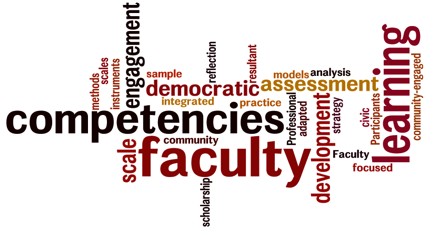
One thing is consistent in the human experience: we tend to do things in the same manner in which we learned. This is especially true when it comes to higher education instruction. Most faculty will teach in the same way they were taught, i.e. lecture. This is fine in the 50-minute traditional classroom with 18-year-olds, but not at all effective in the ADC classroom for 4 hours to an adult population. In an earlier post I looked at the principles of Andragogy (adult pedagogy) and the importance of understanding those principles for effective learning to take place in the ADC classroom. You can find that information HERE.
The inclination of faculty to default to lecture is even more prevalent with adjunct faculty. To combat this, the ADC program must have a rigorous Orientation which focuses on three aspects of higher education in the ADC format:
- There should be a connection made between the instructor and the mission of the University. If faculty see their role in the mission they are more likely to engage students at a more meaningful level than if they are just there for the paycheck. This requires purposeful effort from ADC administrators and must be reinforced on a regular basis. I find that this is the piece most often missed in faculty orientation experiences.
- There should be clear direction provided regarding the application of andragogical principles for the ADC classroom, along with expectations for the faculty to use those principles. I like to call this section “the Andragogical Instructor” and spend some time focusing on the principles of effective interaction with adults to accomplish student learning. I especially take the time to define what a “Collaborative Learning Strategy” is and why it is important for the Instructor to understand and use.
- There should be program specific information provided relevant to the policies, procedures and expectations of the Instructor. This includes working with the curriculum, instructional technology, attendance policies, grading, etc. Of course also covered in this section is what has to be submitted at the end of the course and how the Instructor is paid.
But the Orientation is merely the entry point. It is a definite fact that people leak! Because of this, and because we are not all gifted in every area, the ADS program must have a robust Faculty Development strategy. To fail at this point is irresponsible and indicative of an Institution which only sees the ADS as a revenue stream and not actually part of its mission. This strategy should include site-based meetings, webinars, blogs, videos, etc. The topics covered in the development experiences must include refreshers on each of the points covered in the orientation but now moving into the more grandular, pragmatic, application. Such topics might include: Team Project Management, Classroom Management, Andragogy, Writing across the Curriculum, LMS tips and tricks, Collaborative Learning, Library Usage, Classroom Technology, etc. There is always some discussion as to whether or not those participating in Faculty Development should be paid to do so. Good question, and the answer will vary from Institution to Institution. There isn’t a “right” answer, I’ve seen both models work with equal effectiveness.
Faculty Orientation and Faculty Development are key components of a well run ADS program. In my opinion, you can usually evaluate the quality of the Director of the program by the presence and effectiveness of these pieces.